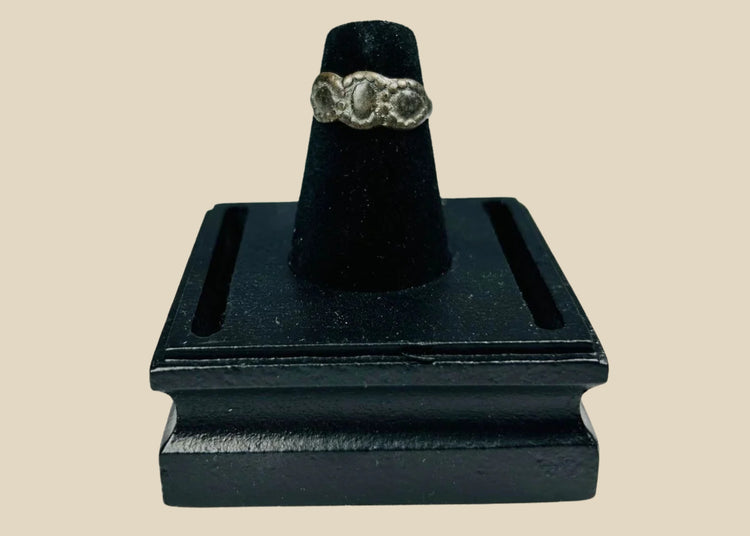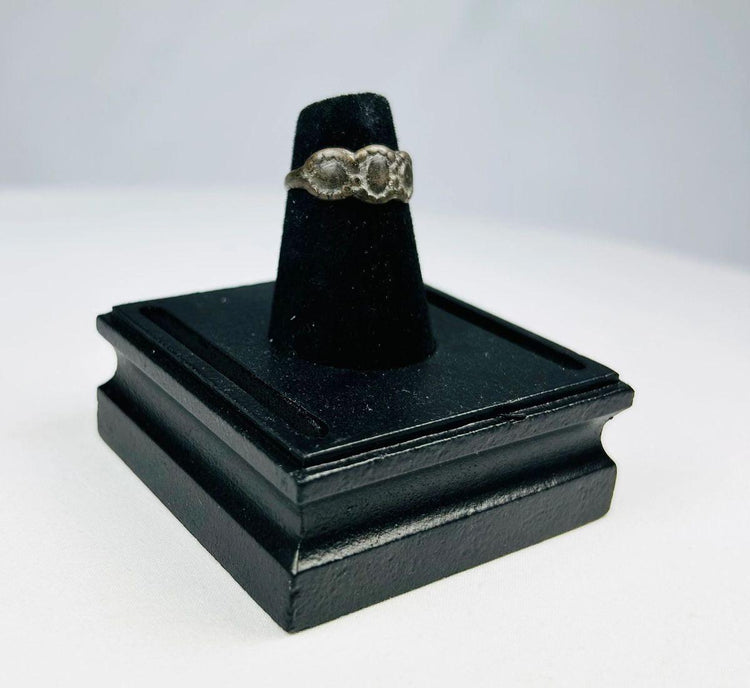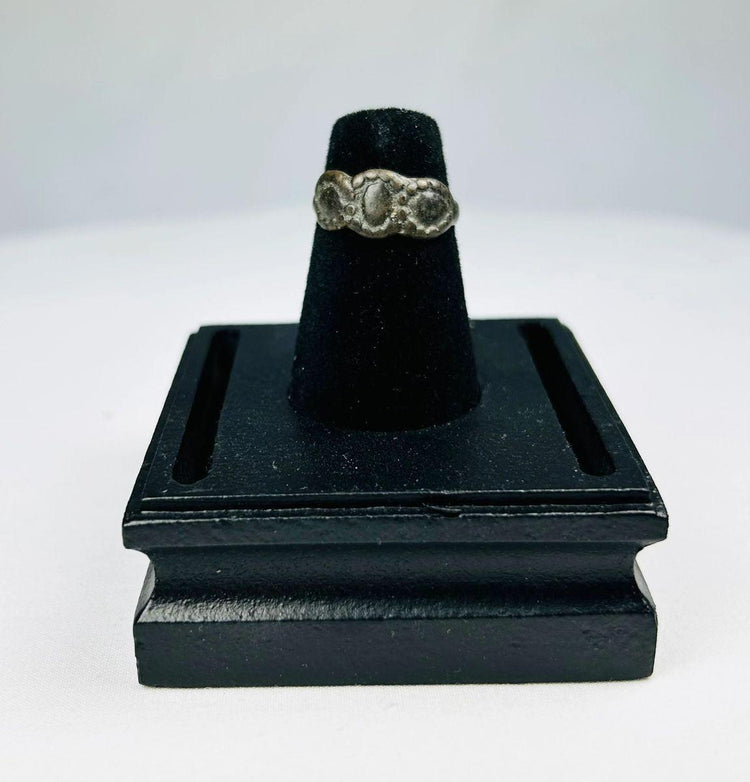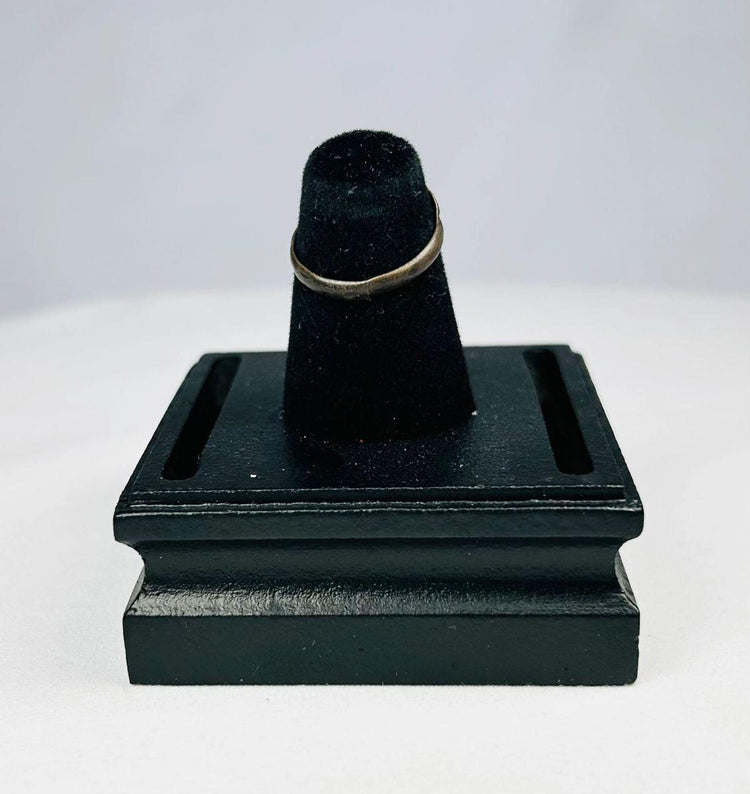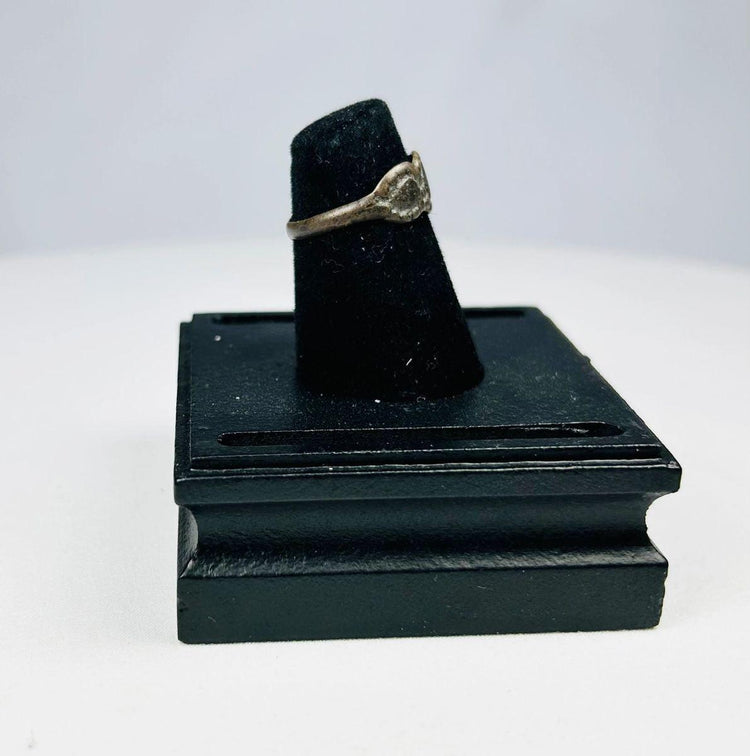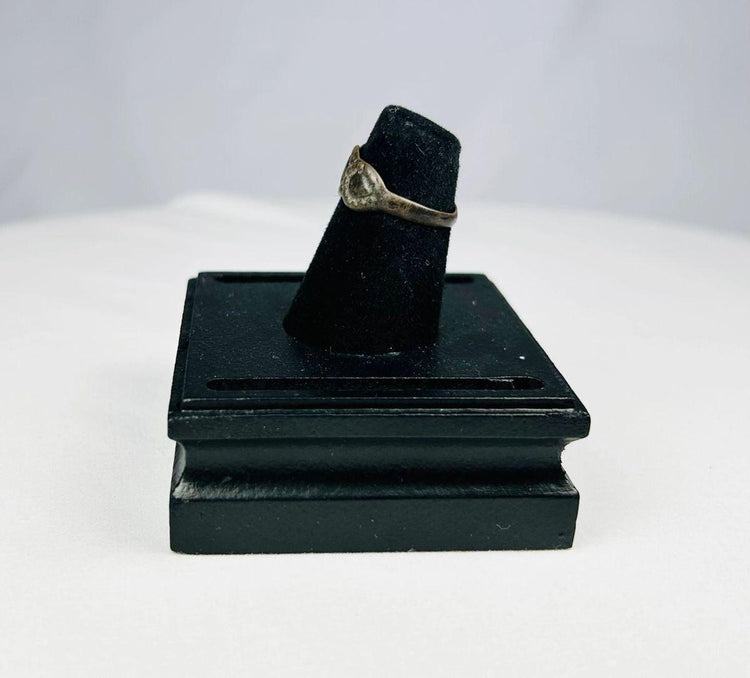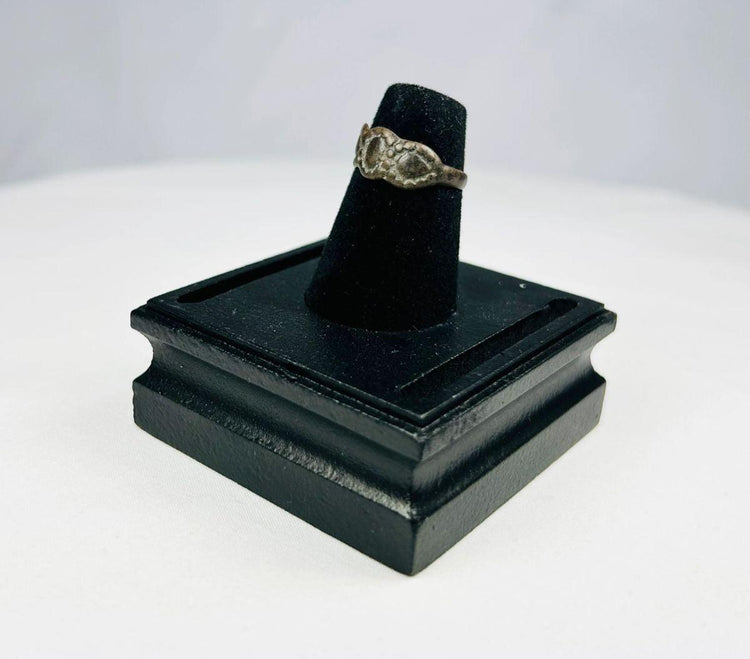Ancient Silver Cluster Ring with Oval Motif | Circa 300–600 CE
Description
More
Less
Historical Context & Origin
Region: Eastern Mediterranean or Near East
Material: Silver
Period: Late Roman to Early Byzantine, circa 300–600 CE
Description
This fascinating ancient silver ring features a cluster design of three oval-shaped motifs, a style deeply tied to the artistry and symbolism of the late Roman and early Byzantine periods. The arrangement of the ovals may have represented unity, continuity, or harmony—concepts central to the cultural and spiritual worldview of the era. With its elegant simplicity and symbolic depth, this ring reflects both the personal identity and cultural values of its wearer.
Features
- Three clustered oval motifs, balanced and harmonious in design
- Handcrafted silver band with natural patina and weathered surface
- Structural durability preserved despite age, highlighting ancient craftsmanship
- A fine example of both personal adornment and cultural symbolism
Cultural Significance
In late Roman and early Byzantine societies, jewelry often carried meaning beyond decoration. Motifs such as clustered ovals symbolized interconnectedness and the cyclical nature of life. This piece may also have served as a signet or status symbol, representing the authority or beliefs of its owner. The use of silver underscores its value, as precious metals were reserved for high-status adornments and ceremonial use.
Condition
The ring shows natural patina and age-related wear consistent with centuries of use. Despite weathering, the clustered bezel design remains well-defined, and the band is structurally intact. These features enhance its authenticity and historical charm.
Dimensions (approximate)
Ring Size: 7 US
Age
Late Roman to Early Byzantine period, circa 300–600 CE
Description
Historical Context & Origin
Region: Eastern Mediterranean or Near East
Material: Silver
Period: Late Roman to Early Byzantine, circa 300–600 CE
Description
This fascinating ancient silver ring features a cluster design of three oval-shaped motifs, a style deeply tied to the artistry and symbolism of the late Roman and early Byzantine periods. The arrangement of the ovals may have represented unity, continuity, or harmony—concepts central to the cultural and spiritual worldview of the era. With its elegant simplicity and symbolic depth, this ring reflects both the personal identity and cultural values of its wearer.
Features
- Three clustered oval motifs, balanced and harmonious in design
- Handcrafted silver band with natural patina and weathered surface
- Structural durability preserved despite age, highlighting ancient craftsmanship
- A fine example of both personal adornment and cultural symbolism
Cultural Significance
In late Roman and early Byzantine societies, jewelry often carried meaning beyond decoration. Motifs such as clustered ovals symbolized interconnectedness and the cyclical nature of life. This piece may also have served as a signet or status symbol, representing the authority or beliefs of its owner. The use of silver underscores its value, as precious metals were reserved for high-status adornments and ceremonial use.
Condition
The ring shows natural patina and age-related wear consistent with centuries of use. Despite weathering, the clustered bezel design remains well-defined, and the band is structurally intact. These features enhance its authenticity and historical charm.
Dimensions (approximate)
Ring Size: 7 US
Age
Late Roman to Early Byzantine period, circa 300–600 CE
You May Also Like




















